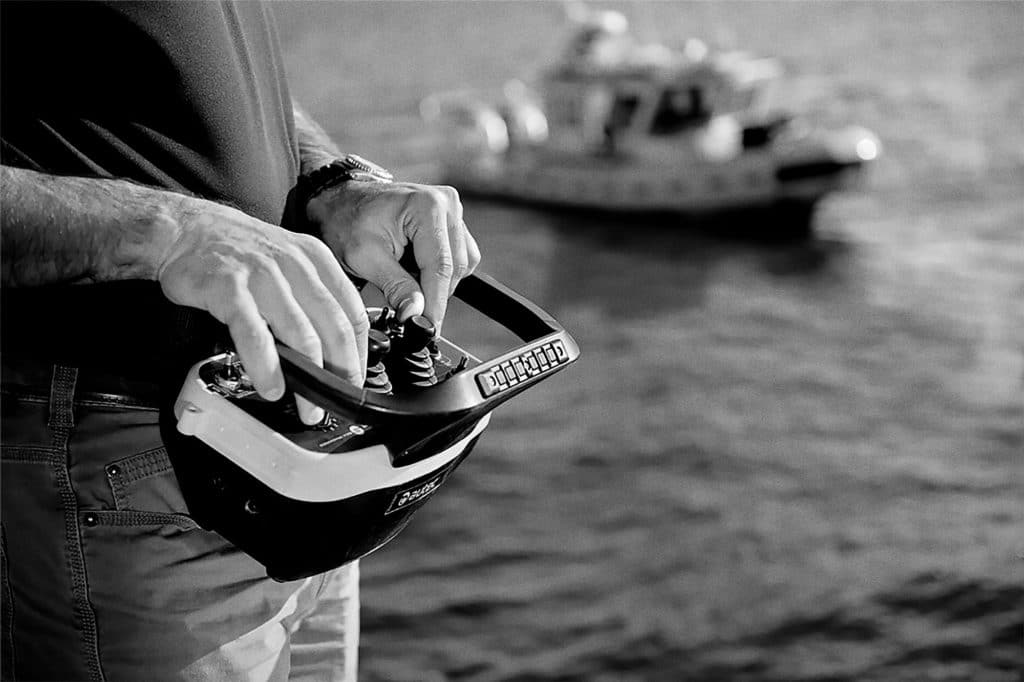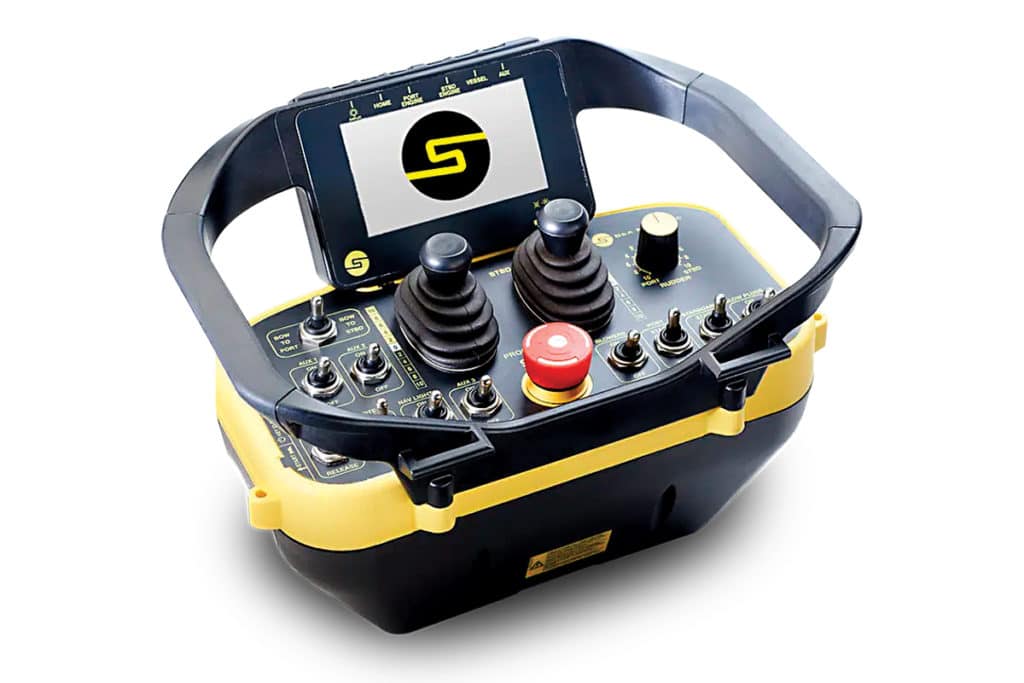
In 1889, American journalist Nellie Bly circumnavigated the world in 72 days by train, steamship, rickshaw, horse and donkey, besting the timeline that author Jules Verne laid out in his fictional challenge.
In 2021, Nellie Bly—a modern tug built by Damen Shipyards in the Netherlands with a Sea Machines SM300 autonomous command-and-control system—completed a 1,000-nautical-mile circumnavigation of Denmark in 13 days, sailing from Hamburg, Germany.
The tug’s journey also had an element of reality overtaking the imagination, given that Nellie Bly’s two commanding officers were in Boston. And while the tug carried two professional mariners on board, the SM300 called the shots for more than 95 percent of the journey. This included 14 port calls and 30-plus self-directed collision-avoidance and traffic-separation course changes.
It seems that if humans can dream it, we also can do it.
Such is the thinking at Sea Machines, a company that Michael Gordon Johnson founded in Boston in 2017. He had spent years in a leadership role at a marine-salvage company, where he realized that the marine environment is an increasingly complex space but that human minds have limited attention spans and information bandwidth to handle it.
“You start to see the [accidents] that can be avoided with new types of technology,” he says, adding that the marine environment is “the most challenging domain on our planet, with the dynamic liquid environment and the forces it puts on vessels.”
The team at Sea Machines is working to address that challenge with autonomous and remotely commanded technologies for the maritime community that, if widely adopted, could help make boating safer for everyone. Johnson’s vision includes autonomous technologies with some level of human oversight—what he terms “human on the loop”—to reduce risk.
“The goal is shifting 99 percent of onboard perception and navigation effort to our system, making the overall voyage safer and easier for those on board,” Johnson says.
Sea Machines raised $1.4 million in seed money; to date, the venture-backed startup has raised more than $30 million. Investors include Toyota Ventures, Brunswick Corp. and military ship-building company Huntington Ingalls. Contracted clients include shipping giant A.P. Moller-Maersk and the US Department of Transportation.

Sea Machines’ first commercially available products debuted in 2019. The SM200 wireless remote-helm-control system is a ruggedized, portable setup that lets a person remotely control a vessel from a range of up to 0.54 nautical miles. It uses industrial-grade components, including a Siemens-based programmable logic controller (PLC) for steering, propulsion and payload (such as water pumps on a fireboat). The SM200 has analog and digital inputs and outputs that let it network with a vessel’s onboard systems and instrumentation.
The SM200’s user interface communicates wirelessly with its networked onboard cabinet (a black-box computer) using dynamic frequency-hopping radio. Operators control the vessel via a wearable belt pack. This allows onboard operators to better position themselves for maneuvering in view-obstructed scenarios and lets remote operators handle vessels in environments that are hazardous to human health.
If the SM200 suffers a communications loss, the system enforces a “time-out leash” and stops the vessel.
The SM300 autonomous command-and-control system used aboard Nellie Bly in 2021 is even more advanced than its predecessor. It has sensors, computers and satellite communications to give remote operators full control over a vessel’s engines, steering, transmission and auxiliary systems. As seen aboard Nellie Bly, it can also call most of its own shots.
The system accomplishes both these things via an onboard, self-contained cabinet and a ruggedized Windows-based laptop that serves as a remote user interface.
“It’s called the 300 because there are three main processors,” Johnson says. “There’s the low-level control, which is PLC-based; there’s the autonomy computer, which makes decisions on path planning and collision avoidance; and the third processor is the user interface.”
The SM300 can interface with a variety of third-party vessel sensors. These include AIS, depth transducers, multi-antenna GPS/GNSS, and compatible ARPA-enabled radars. “We have a number of protections in our system to keep the vessel and the people on board safe, from collision avoidance to low-depth [scenarios],” Johnson says.
While Sea Machines marketed and sold the SM200 and SM300 directly, the Boston-based technology firm plans to sell its second-generation products through third-party OEMs, including engine manufacturers. Its is already working with companies such as Rolls-Royce and HamiltonJet.
The first of these second-generation products—the SM360—is a Linux-based system that Johnson describes as an ultra-smart autopilot capable of autonomously managing a vessel’s steering, propulsion and collision avoidance. HamiltonJet launched this system as JetSense.
“It’s pilot assist,” Johnson says, comparing the marine-focused technology to driver-assist automotive features. “It’s controlling steering, propulsion—perceiving the domain and doing collision avoidance as necessary.”
The SM360 also includes Sea Machines’ computer vision, dubbed AI-ris (for artificial intelligence recognition and identification system). AI-ris is an image-based form of AI that detects, tracks, geolocates and classifies objects it “sees” into 10 different types (think buoys, ships or whales). It incorporates a daylight camera and compares the real-time image feed with a database of stored images. The system then uses this information—plus data derived from AIS, electronic charts, radar, GNSS and other sensors—to make navigation and collision-avoidance determinations.
Should the system detect something unexpected, or if a situation exceeds certain thresholds, it notifies its human operator.
These are nascent days for Sea Machines, but the future appears bright. Provided that these systems have steady communications with their human on the loop, and willing adopters, the technology could help flatten collision curves.
Weather Beater
In addition to autonomous operations, Sea Machines’ Linux-based SM360 includes an API (application programming interface). It lets third-party developers create weather-routing software, which the SM360 can then use for route planning. This technology could open the door to greener passages and less pain at the pump for mariners.









